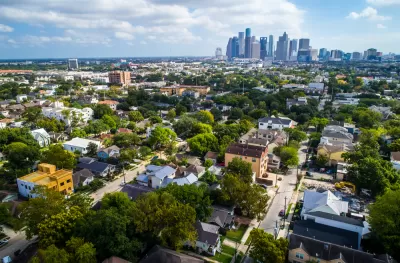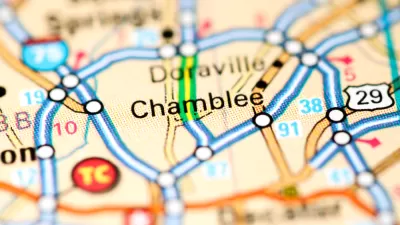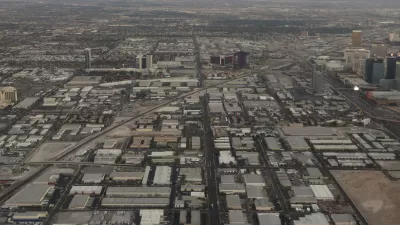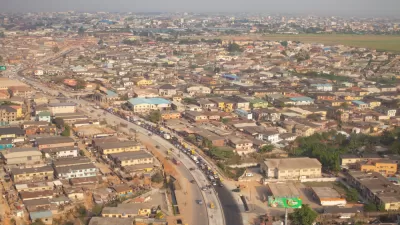Traditionally associated with its wide-open spaces, Texas is now, undeniably, defined by the cities and suburbs that comprise its built environment.

Three institutions—the LBJ School of Public Affairs at UT Austin, the SMU-Bush Institute Economic Growth Initiative in Dallas, and the Kinder Institute for Urban Research at Rice University in Houston—issued a "metropolitan blueprint" for the state of Texas. The blueprint is the first of its kind, as is the collaboration.
The key assumption underlying the blueprint is that the state is now defined by its developed places. "[C]ities and suburbs are Texas these days," reads an article by William Fulton announcing the report.
The report, therefore, offers a "road map that will move Texas toward a prosperous and successful metropolitan future" by challenging the status quo of business friendly policies and sprawling development patterns.
Before the pandemic emptied out urban business districts, Texas’ cities and suburbs had become notorious for their traffic congestion. Travel between the nodes of the Texas Triangle is time-consuming and inefficient. Governor Greg Abbott has acknowledged that road-building alone can no longer suffice to meet the state’s transportation needs.
The metropolitan prescription offered by the blueprint focuses into three key recommendations: 1) Texas should invest in Texans, 2) Texas should empower local communities, and 3) Texas needs solutions that are Texan. The report also focuses on three key areas: 1) Economic Development, 2) Housing and Land Use, and 3) Transportation and Infrastructure.
For additional reading on the blueprint—its conclusions, assumptions, and recommendations—see also an opinion piece written by Fulton, Kyle Shelton, Steven Pedigo, and J.H.Cullum Clark that's behind the paywall at the Houston Chronicle.
FULL STORY: A blueprint for continued economic prosperity in Texas

Manufactured Crisis: Losing the Nation’s Largest Source of Unsubsidized Affordable Housing
Manufactured housing communities have long been an affordable housing option for millions of people living in the U.S., but that affordability is disappearing rapidly. How did we get here?

Americans May Be Stuck — But Why?
Americans are moving a lot less than they once did, and that is a problem. While Yoni Applebaum, in his highly-publicized article Stuck, gets the reasons badly wrong, it's still important to ask: why are we moving so much less than before?

Using Old Oil and Gas Wells for Green Energy Storage
Penn State researchers have found that repurposing abandoned oil and gas wells for geothermal-assisted compressed-air energy storage can boost efficiency, reduce environmental risks, and support clean energy and job transitions.

Greening Oakland’s School Grounds
With help from community partners like the Trust for Public Land, Oakland Unified School District is turning barren, asphalt-covered schoolyards into vibrant, green spaces that support outdoor learning, play, and student well-being.

California Governor Suspends CEQA Reviews for Utilities in Fire Areas
Utility restoration efforts in areas affected by the January wildfires in Los Angeles will be exempt from environmental regulations to speed up the rebuilding of essential infrastructure.

Native American Communities Prepare to Lead on Environmental Stewardship
In the face of federal threats to public lands and conservation efforts, indigenous groups continue to model nature-centered conservation efforts.
Urban Design for Planners 1: Software Tools
This six-course series explores essential urban design concepts using open source software and equips planners with the tools they need to participate fully in the urban design process.
Planning for Universal Design
Learn the tools for implementing Universal Design in planning regulations.
Heyer Gruel & Associates PA
City of Moreno Valley
Institute for Housing and Urban Development Studies (IHS)
City of Grandview
Harvard GSD Executive Education
Salt Lake City
NYU Wagner Graduate School of Public Service
City of Cambridge, Maryland





























